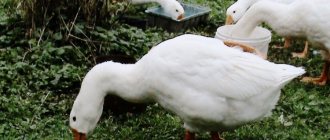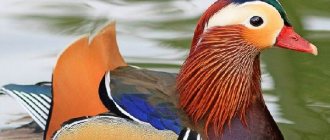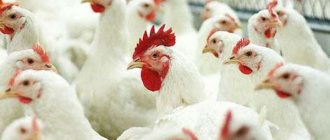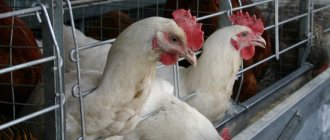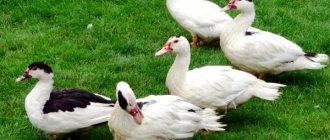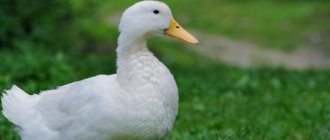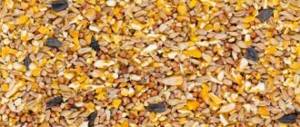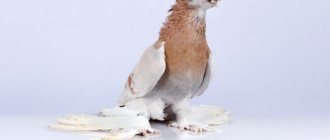Thousands of years ago, people began to domesticate wild animals and began to create their own farms. Many years have passed, and therefore individual areas of the economy have turned into entire sciences, which at times are not easy to understand, especially for an inexperienced person.
Ducks are the most common species in poultry farming, which is influenced by several factors. Now there are different breeds of ducks, and we will try to sort out the main ones.
Peking ducks
There are now thousands of breeds of domestic and wild ducks in the world. However, the Beijing one remains the most popular among farmers. If you look at the descriptions of different breeds of ducks, you will notice that the differences usually come down to the purpose of rearing - meat or eggs.
The Peking duck is one of the most versatile representatives of its species, despite the fact that it was bred more than 3 hundred years ago. They grow quite quickly - by 2 months they weigh 2.5 kg, and the meat is to the taste of many people.
They are usually sent for slaughter at the age of 2 months, when the carcass is still tender and the first moult has not begun, which spoils the appearance of the dead duck.
If the goal is an egg, you can safely keep the duck for at least the whole year, and only then send it to slaughter. Males grow larger - about 4 kg, and therefore it makes sense to let them grow, especially in small-scale farming.
Peking duck needs the most ordinary conditions. It is because of this that ducks of this breed can be found in almost every poultry yard.
Scorched duck - description of the species, nesting site, nutrition, features
Scorched duck - this bird of the duck family differs from its fellows in its bright and unusual appearance. For many centuries, some peoples considered it a sacred bird. Because of its color it is also called the red bird. African deserts and European steppes are considered its homeland. Currently, it is distributed mainly in the south of Europe, in Central and Southeast Asia and in the north of the African continent. You can meet it in the southern regions of Russia, Ukraine, Kazakhstan, China, in the countries of Central and South Asia, and on the northern coast of Africa. It can also be found in more northern regions as decorative ornaments in zoos, as well as in private home lands and in park ponds. For nesting, wild individuals choose mountain or steppe lakes, as well as reservoirs in desert areas. The bird does not like forested or densely vegetated places. They also do not like freshwater bodies of water and for nesting they choose open water bodies without strong thickets with salt or at least brackish water.
The sardine easily tolerates the cold, so it can overwinter in non-freezing reservoirs in nesting areas. For wintering, birds go to warm regions south of their main habitats. The duck is quite large in size, which sometimes allows it to be mistaken for a goose. Its body length is about 70 cm, and its wingspan reaches 150 cm. The birds weigh from 1000 to 1600 g. The long, elongated neck gives it grace.
The duck stands out for its color. In general, its plumage is orange with a brown tint. The color of the head is lighter than the color of the body. The wings are white, and the flight feathers are black with prominent green mirrors. Her rump and tail are black. Their legs and beak are also dark. There are small teeth along the edges of the beak. During the mating season, birds hardly change their color. Only the male develops a black narrow collar, and the female develops small white spots around the eyes.
Ducks spend the day resting, usually on the water. They can be seen sleeping on the water, sitting on rocks, or standing on the ground at the water's edge on one leg with their beak tucked under their wing. They most often obtain food in the evening and at night. By nature, they are very hot-tempered and aggressively defend their territory. There should also be no other birds on the water near them. The ogre is a monogamous bird. They choose a pair for many years and only in the event of the death of a male or female, the remaining individuals create a new family. Pairing occurs during the winter. They return to the nesting site in March together and make long flights over the territory chosen for nesting. No obvious mating games were observed. Usually the female chooses the male. On the water, she actively swims around him, stretching her neck and pressing her head to the water. The male swims inactively, with his wings slightly lowered into the water. She attracts the attention of the male with a sharp, loud cry.
After mating, the birds fly in pairs over their territory. A month and a half before laying eggs, they build nests, lining them with soft down. They build nests at a height of more than 10 m. To do this, they choose tree hollows, rock crevices, washed out depressions in the earth's surface and even animal burrows. A clutch of ogari consists of 8 – 10 eggs. The female incubates the clutch for a month. At this time, the male protects her and the territory from the encroachments of competitors. Due to his nature, fights sometimes break out between them.
The chicks are born almost simultaneously. They are covered with soft down, sighted and can feed themselves. Having become slightly stronger, they jump out of the nest and go to the pond, accompanied by their mother. They spend the entire day on the water and return to the nest only at night. Their mother teaches them to swim and dive in order to be able to get their own food. Ducklings swim well and catch various insects and their larvae. Both parents look after the children. The mother is in close proximity to them, and the father creates for them a certain security territory, beyond the boundaries of which he does not allow anyone. Two months after birth, parents cease to care for their babies. They become independent and get their own food and take care of their own safety. Young birds begin to fly.
They get their food on water and on land. During the day on the water they catch small fish, mollusks, crustaceans and aquatic insects. On the shore they eat young grass and plant seeds; in the fall they feed on winter grain left in the fields after harvesting. Of interest to humans is not only poultry meat, but also eggs and soft, warm fluff, from which warm clothing and bedding are made. That's why they hunt her. This is especially true in summer and autumn, when the ogar eats mainly plants and their seeds, then their meat is tasty and has a pleasant smell. The bird is also caught and tamed, and bred at home. In some countries, for example in Ukraine, the number of birds is very small. Hunting for this duck is prohibited there, and it is listed in the country's Red Book. In general, the number of red ducks in the world is sufficient to allow hunting.
Bashkir colored
All over the world, breeders have been trying to develop the ideal breed of duck for centuries. The result is many wonderful varieties that often have special purposes.
Russian farmers did not stand aside from this movement and were able to create their own type of duck - the Bashkir color duck. Ducks of the Bashkir breed are distinguished by low legs, on which there is a strong and massive body. This happens due to the fact that by 2.5 months this breed can grow up to 3 kg.
However, this is not their main feature. It's all about the meat, which is not as fatty as that of the same ones from Beijing, and therefore is considered dietary. Thanks to their taste, Bashkir ducks have become so popular among restaurateurs.
Australian spotted duck
This name is a misnomer, as the Australian spotted duck is one of the few domesticated duck breeds that originated in the United States. John C. Kriener and Stanley Mason of Pennsylvania developed the breed by crossing mallards and various Australian wild ducks, spending several years developing standards for the new breed. This breed first appeared at an exhibition in 1928.
Many enthusiasts do not believe that mallards were part of the ancestry of these domestic birds, because such hybridization is impossible due to chromosomal differences: hybrids of mallards with wild or domestic ducks are usually sterile. However, rare mutant forms bred through such games with nature occasionally turn out to be completely fertile. David Holderred, one of the top waterfowl breeders in the United States, said he has seen successful results from crossing Australian wild ducks with mallards.
There are three different color varieties of Australian spotted ducks: green-headed, blue-headed and silver-headed.
Muscovy duck
You may have already looked at duck breeds in photos and noticed one that looks a little like a turkey. So, this is a musky duck, also known as an indo-duck. The name was influenced not only by the appearance, but also by the characteristic smell of feathers.
These ducks are native to South America. Local breeders tried to breed a duck whose meat would not be as fatty as the traditional one, but at the same time it would not be capricious in terms of living conditions and nutrition.
The obtained result pleased not only South Americans, but also the whole world - within 10 years, almost all countries began breeding this species.
A special feature of such ducks is their character and behavior. There are different breeds of domestic ducks, and almost all of them love to swim and cannot fly. This story did not affect the Indian woman.
Representatives of this breed do not like to swim at all, but they easily fly. Therefore, they have to clip their wings or cover the enclosure with a net so that they do not fly away.
The meat of this duck is very tasty, despite the fact that an adult can grow up to 4.5 kg, which is more than the average. They live and breed in the simplest conditions, but they produce much fewer eggs than the same ones from Beijing.
Bashkir duck
The leaders in obtaining new breeds of ducks and crosses for domestic and industrial breeding in Russia today are the breeders of the Blagovarsky breeding plant in Bashkiria. Thanks to their work, “Bashkir duck” has become a recognizable brand not only in our country, but also abroad.
Based on Peking ducks with a manifested “wild” plumage gene, the breed of Colored Bashkir ducks was created here. This is a highly productive, early-ripening meat bird, which has two color options: khaki or brown and black with a white breast.
A characteristic feature of Bashkir ducks is the low fat content of meat compared to the Peking or Blagovarian breeds.
Another well-known cross of Blagovarsky ducks was also obtained from the Bashkir breed. This is a universal meat-egg bird, growing up to 3.4 kg by seven weeks and at the same time capable of producing up to 240 high-grade eggs per year.
The ducklings of this cross are distinguished by excellent vitality and unpretentiousness. They grow well both in industrial-type farms and in personal backyards.
Mulard
If we are talking about meat breeds of ducks, then it is worth remembering the mulards. To obtain this breed, breeders for many years tried to cross two breeds - the oriental, which we talked about at the very beginning, and the musk, which was discussed before. The result was really surprising, because already at 2 months these ducks can weigh almost 3.5 kg, which is one kilogram more than Peking ducks.
Mulard ducks: growing at home, features of their maintenance and fatteningCaring for ducklings: keeping, feeding, advantages of raising and recommendations for beginners (80 photos + video)
Duck eggs - proper breeding of ducks, implementation of the best business projects and incubation of duck eggs (85 photos)
If you are not yet sure that this is a significant discovery and an important breed, you should know that in France there are almost always about 35 million representatives of this species. This is because the liver of females of this breed is used to prepare a famous and expensive delicacy - foie gras.
However, there are other features of the breed. These ducks can only live in captivity because they need artificial feeding. However, under the conditions of an ordinary farm they do not reproduce - there are special institutes for this.
Domestic Mulard duck
Mulards, thanks to their lean meat, early maturity and record meat productivity among waterfowl poultry, are becoming increasingly popular both among amateur poultry farmers and in huge industrial feeding complexes. Meanwhile, the Mulard domestic duck cannot rightfully be called a breed. This is an interspecific hybrid obtained from crossing Peking or other Eurasian ducks and American Indian ducks.
A pair for a Muscovy duck when obtaining hybrid offspring can be either Peking birds or Rouen ducks, as well as individuals of other meat breeds. Mulards are called broiler ducks because of their excellent fattening qualities, similar to chickens of meat breeds. At the same time, the bird behaves ideally both when raised on large farms and on private farmsteads. Domestic Mulard ducks are peaceful, calm and unpretentious.
Over four months of maintenance, the bird’s weight can reach up to 7 kilograms. Females in industrial complexes are often raised for meat, and drakes produce excellent liver for making foie gras.
Since such a hybrid generation does not produce offspring, the parent flock is not formed from the bird, and eggs are not obtained from the mulards.
Hybridization has helped poultry farmers solve two major problems of Muscovy and Pekin ducks. The former, having lean meat, cleanliness and a quiet disposition, fatten up relatively slowly and do not weigh too much. Peking birds are larger, but quickly gaining weight, they can become fat and lose the quality of meat.
Domestic mulard ducks are ideal for growing because they are both early maturing and produce amazing-tasting meat.
Blue favorite
Even the government has had a hand in increasing the number of duck species. If you look at the description of the Favorite duck breed, you will notice that these birds survive the frosts that are so characteristic of Russia. They grow without problems even in winter, but this is not their main advantage.
The most important thing is the meat. Ducks of this breed were able to outperform both Peking and Mulard ducks and almost everyone else in the world - by two months they can weigh almost 4 kg. This figure applies to females; the weight of a male can reach up to 5 kg. And this can be achieved without greens in the diet in harsh winter conditions. What can we say - they knew what they were doing.
black duck
The East Indian or Black duck is a popular ornamental breed today. It is also believed to have originated in the United States, like several of the common duck breeds listed above. If these birds are present in photos of ducks of different breeds, then they are quite easy to recognize; their glossy black plumage, giving off a blue or green sheen, is difficult to confuse with anything.
